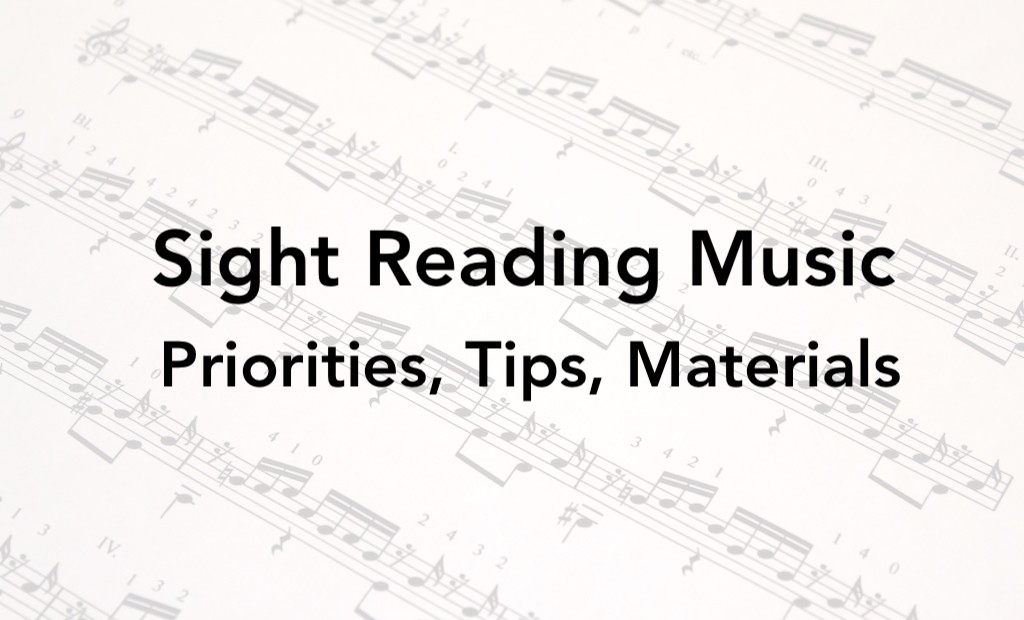
How to Practice Sight-Reading Music on Classical Guitar – In this lesson I’ll examine ways to improve and practice your sight reading of sheet music notation on classical guitar. However, I think you find all the information relatable to any instrument. If you need to first learn how to read music in general you can check out my educational guitar methods including my free beginner method or see this article on the process of learning to read music. Guitarists are notoriously poor at sight reading so it’s a skill they should include in their daily practice sessions. With daily practice and good materials your sight-reading skills will improve dramatically. I’ll list some sight reading materials at the end of this article.
What is sight-reading music?
Let’s take a look at a basic definition via Wikipedia as it applies to all instrumentalists and singers. In short, sight-reading is playing music from notated sheet music for the first time with the aim of playing it musically well.
In music, sight-reading, also called a prima vista (Italian meaning “at first sight”), is the practice of reading and performing of a piece of song in a music notation that the performer has not seen or learned before. Sight-singing is used to describe a singer who is sight-reading. Both activities require the musician to play or sing the notated rhythms and pitches.
Sight-Reading Music – Wikipedia
Benefits Sight Reading
The benefits are extremely rewarding and professionally very important. On a basic level, the ability to sight read will allow you to read easy pieces quite well even if you’ve never played the composition before. At more advanced levels good sight reading will allow you to devour repertoire and survive ensemble rehearsals with other musicians. A wealth of music is ready for you to play and enjoy without much practicing. But here are some more benefits of being a good sight reader:
- Enjoyment of just playing lots of music with ease
- Learning new repertoire will be easier and faster
- Rehearsals in duets and chamber music will much easier
- Sight reading and performance skills have very similar priorities
- Great for research and sampling new pieces and composers
- Makes playing gigs way easier
- Bringing music theory to life becomes easier and more practical
- And many more reasons…
Priorities When Sight Reading Music
Keep feeling the beat – The number one priority is to play with a steady beat, keep going, and know where you are in the music. You can make note errors but if you lose the beat you’ll lose the listener and possibly your place in the music. Imagine tapping your foot to someone, they make a mistake and their rhythm gets off, you can’t tap your foot anymore, the groove is lost. It’s even worst if you are playing a duet or in a group as losing the beat could cause you or the other musicians to get mixed up.
Don’t worry about mistakes – Although you want to choose a tempo that you can play well at, mistakes will occur when sight reading and we want to minimize the damage. The absolute worst thing you can do is to go back and try to correct it. When you go back correct a wrong note when sight reading you’ve made the initial mistake and then an additional mistake of going back and usually also rhythmic errors along with it. If you miss a note or play a wrong one just keep playing the next notes in rhythmic time as if you played perfectly. Think of the notes and the beats as a point system, each pitch and the continuation to the next beat or rhythm gets you points. If you miss a note but keep the beat you still get a point for keeping the rhythm correct.
Look Ahead and Prepare – When sight reading you want to look ahead of where you are playing so that you know what’s coming next. This is particularly important on guitar because if we need to shift up the fretboard we’ll want to know about it ahead of time. Good sight readers are always looking a bar or two ahead of where they are playing, especially if the tempo is fast. I’ll talk more about this below.
Tips for Practicing Sight Reading
Practice Sight Reading Everyday – Sight reading is a skill you need to develop over time with regular practice. I often do my sight reading near the beginning of my practice session after my technique warmup. Do it every day for the rest of your life and you’ll get better and better. You’ll need lots of materials though because you want to read music you haven’t seen before. See my list of materials below this section.
Force Yourself to Look Ahead – I often play a game with my students where I cover the next bar of sheet music before they play it. This forces them to look a bar or two ahead of where they are playing at all times. Looking ahead in the music is difficult and is a skill that must be practiced. It allows you to see what is coming next and prepare for it. You’ll have to really force yourself to look ahead at first.
Consider Using Methods and Sight Reading Books – Methods and sight reading books are often organized in a progressive manner with themes and topics so it can help you focus on one aspect of reading at a time. This will help you build foundational skills. Consider going over a method book below your level to solely work on sight reading. There are also specific books for sight reading that offer tips and shorter exercises. I’ll list materials and method below this section.
Focus on Rhythm and use a Metronome – Your number one priority is to keep the beat and your place in the music so turning on the metronome and being strict about not dropping beats is extremely important. I find the metronome is super useful for this. Also, you can adjust to tempo on the metronome to either challenge yourself or make it easier.
Prepare before you start (at a glance) – Avoid mistakes by building good habits such as scanning the piece for the time signature, key signature, title of the work, tempo indications, dynamics, shifts to upper positions, changes of key, or tricky passages. You might be able to eliminate confusion by simply having the habit of scanning over a few things before starting.
Choose a Tempo that Allows You to Play Musically – Although sight-reading involves some intense elements to work on, the goal is still to play musically with good phrasing, tone, dynamics and articulation. Therefore, choosing a tempo that is slow enough to allow you to play both the correct notes and rhythms as well as play musically is essential. Always air on the side of caution by picking a tempo slower than you think, it’s better to go slow and play beautifully than to play fast but poorly.
Sight Read Chamber Music with Friends – This is an excellent and very musical way to practice sight reading. The actually sheet music in chamber music can sometimes be easier than solo works but still musically rewarding so it’s perfect for practicing your sight reading. All the musicians in the group can encourage each other to play in time and practice keeping their place in the music. The priorities of sight reading are automatically built into playing in ensembles. It can also be super challenging to keep up with players more advanced than you (which you should think of as a positive thing!). Learning to survive rehearsals with more advanced musicians is a rite of passage and can super charge your skills.
Study Music theory and musicianship – Theory teaches you how music works and how it relates to historical and contemporary compositions as well as the fretboard. Musicianship is the skills involved in music from listening, hearing what you see, executing rhythms, and more. Knowing some music theory will improve your reading skills. Seeing intervals, chord qualities and more just by looking at the page will instantly translate into hand and finger shapes on the guitar. You’ll be able to correct mistakes before they happen on the fretboard. Instead of picking through each note of a chord and trying to find it on the guitar you’ll be able to just see that it is a major chord and make the shape instantly on the guitar. This is particularly helpful in sight-reading on the guitar. You can check out my recommended Music Theory Books.
Study Guitar Technique and Fretboard Comprehension – Having good guitar technique will allow you to play confidently and it just eliminates one element from the requirements of sight reading. Fretboard comprehension is similar to theory studies but it’s about knowing the entire fretboard inside and out from how scales, chords, and intervals work on the six strings. It’s the study of how things work on the fretboard rather than the specific act of practicing scales or exercises.
Use Appropriate Musical Materials at Your Level – Finding the right materials for your level are essential to practicing sight-reading. However, adjusting your tempo can also help as going slower will make the reading easier and going faster will make it more challenging. I’ll list some material below but sight reading methods or practice books have a variety of material in different textures with progressive levels that can help you find your strengths and weaknesses.
Consider playing more single-line melodic material – Reading single-line melodic material is easier to relate to scale patterns and positions so sometimes easier to sight read. Although guitar can play thicker textures, we could all benefit from more melodic single line practice. String players such as violinists do it most of the time and they are usually fantastic sight readers.
Materials and Books for Sight Reading on Classical Guitar
Sight Reading for the Classical Guitar (2 books) by Robert Benedict – I like these books because they explore a variety of forms, phrasing, dynamics, and varied skills. They come without videos or audio but great for sight reading practice as they cover a lot of ground in a relatively short book. Playing through these exercises is similar to playing a few hundred compositions but in only 8-16 measure snippets. It fast-tracks the variety of textures the student encounters.
Other beginner method books – An amazing thing to do (that most student don’t) is go buy a bunch of other beginner method books. If you are using my method books you’ll want to continue to build on your progress with my next book but using another beginner method for sight reading is great practice. Plus you’ll hear the same info from a different teacher for review or clarity. For example, the Hal Leonard classical guitar method is good extra reading practice and might cover something you missed or had forgotten. Or choose a jazz or popular style method with music notation to gain some skills outside of the classical guitar.
Full melodic study over the entire fretboard – One excellent book is the Scale Pattern Studies by Aaron Shearer. This is a very comprehensive book about scales and melodic sight reading. Over the course of 279 pages you learn scale patterns in every key and area of the guitar and then read exercises using those scale patterns. It’s a direct connection between the scale pattern and the reading skills. I do this in my grade repertoire books a bit but this book does it in every key and in every position of the guitar. Most students can’t handle this book at the beginner level even though it would be good for them. But intermediate students can start integrating it into their practice sessions.
An Overlooked Aspect – I learned to read music when I was younger and taking lessons. But later in life I attended jazz college for awhile before returning to study classical guitar and make it my profession. At jazz college I learned all my scale and chord knowledge away from sheet music and when I returned to classical music and books such as Shearer’s I had no trouble digesting the material. So branch out a bit and expand your knowledge base.
Start Sight Reading Music Now
See my page on How to Use my Educational Series of books with videos to start reading music right now at a level appropriate to your experience. If this is your first time reading but you already have guitar experience I suggestion starting at the very beginning and integrate it into beginning of your practice session in small amounts.
References and Links
Check out some more material on sight reading from these sources and friends.
Sight-Reading Music – Wikipedia Definition
How to help music students with sight reading – The Strad
10 tips to improve your sight-reading – The Strad
Sightreading is a skill that should be taught early – The Strad
Piano sight-reading for beginners – Pianist Magazine
Piano Sight Reading 101 – Pianist Magazine
5 Tips for Improving your Sight-Reading – Pianist Magazine

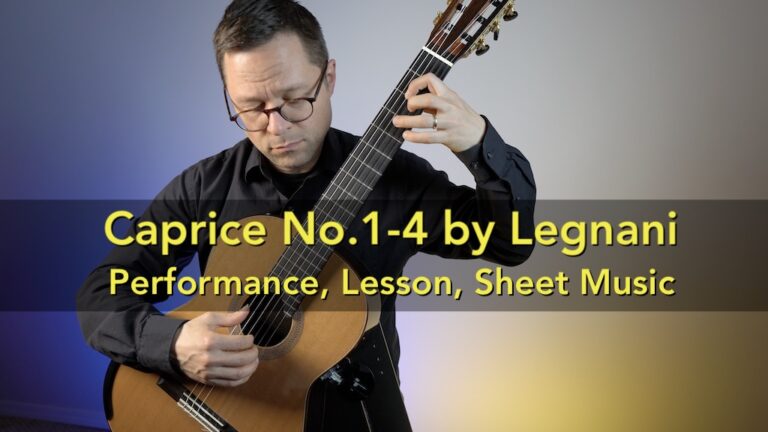
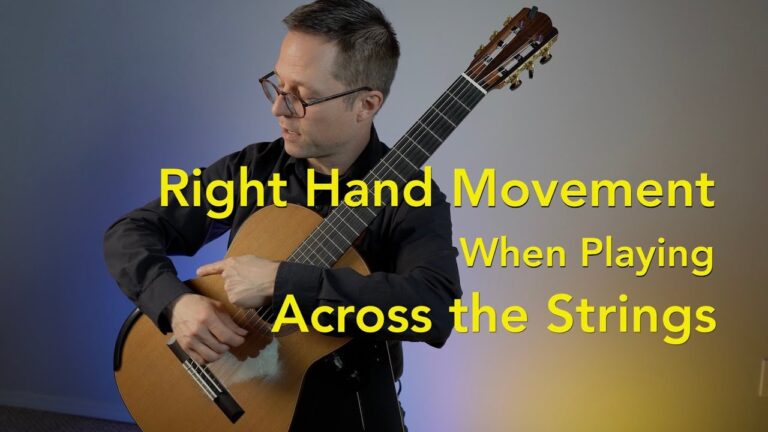
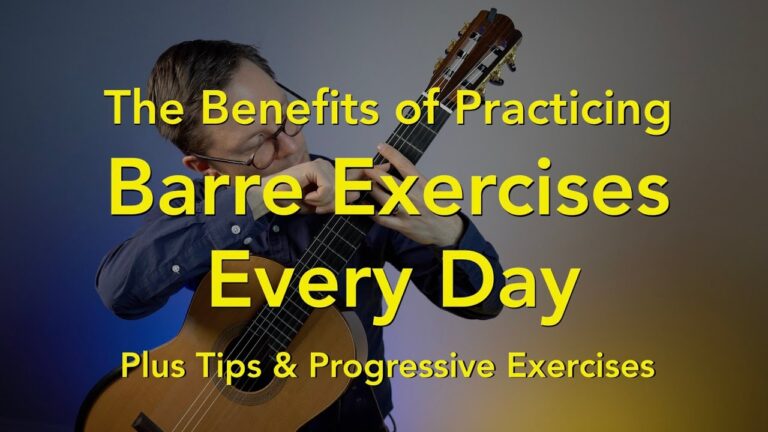
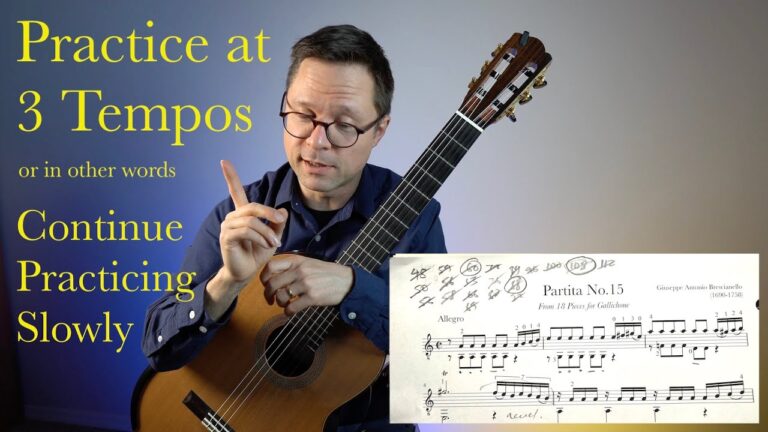
I just starting your Method 1 book and am interested in improving my sight reading. Would you recommend Robert Bennett’s 2 books, Simon Powis’ book or something else for a beginner? Thank you.
All the books you mention are great. It depends on how it goes for you. If you are able to progress through my book comfortably I recommend you proceed to Volume 2 and then use Benedict as a review book as you continue to progress. You’ll then have Volume 2 for progressing and Benedict for sight reading review.
Can you recommend material for learning higher position notes on guitar please, and sight reading these higher positions? I find that most methods ramp up the difficulty level in all areas, or conversely the exercises are just too simple and not musical eg. Noad. I would welcome slightly easier higher position exercises even though I may be more advanced in other aspects of playing guitar. So simple higher position exercises, and plenty of them! I have yet to find a method that does this…Thank you
My educational series slowly introduces upper position notes as you go. You can check out the progression of the books here.